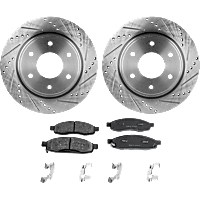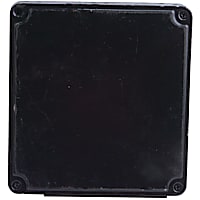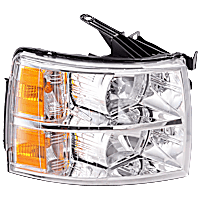As plans for reopening schools leave many American families uncertain about when and if they should send their kids back to school this fall, many parents are considering continuing their kids’ formal education outside of the classroom.
For most parents, however, one of the biggest challenges with home education is keeping children engaged, along with the other limitations that come with staying indoors.
One way to break the monotony of at-home schooling is to plan fun activities that can also help kids acquire new knowledge and skills.
Here are some ideas for car-inspired activities that you can do at home with students of all ages.

Pre-School: Building a Makeshift Car Wash Tunnel
Building a car wash tunnel for older babies and toddlers is a great way to develop their motor skills and encourage imaginative play. This activity makes use of items you can find around the house, which makes both preparation and clean up much easier.
You’ll need at least three dining chairs and a few pairs of long socks, stockings, and/or scarves.
Simply arrange the chairs into a makeshift tunnel and wedge the socks in between each chair. Push the chairs together and place a cushion on top of the socks to keep them secure. They should hang low enough so they resemble the brushes in a real tunnel car wash.
Then, it’s all a matter of letting your child pretend to be a car and crawl through the makeshift drive-through car wash.
Crawling and sliding on the floor is great for developing your child’s strength and coordination. Touching different cloth textures and finding their way through the tunnel is also a good exercise for sensory exploration.
You may also encourage them to push their toy cars through the carwash to develop their fine motor skills. At the end of the day, home-learning activities for preschoolers should result in hours of fun and learning with your kid.

Elementary: Racing Toy Cars and a Lesson on Friction
Playtime is a great opportunity to demonstrate the practical application of scientific concepts that may be hard to grasp through reading alone. One of the topics you can easily teach your kids through play is the concept of friction.
All you need for this activity is a remote-controlled toy car, some sandpaper, gravel or small rocks, a tiled or concrete surface, masking tape, measuring tape, and a stopwatch.
You’ll also need a pen and paper to record the results of your experiment.
Create a race track that’s at least 5-feet long using your measuring tape on a somewhat smooth, flat surface—ideally concrete or tile. Lay down pieces of tape to designate your start and finish line.
Give your kid control of the remote and assist them by using the stopwatch to time how long it takes for the toy car to travel from start to finish. Record the time on a piece of paper (make sure to note whether it was tile or concrete).
Repeat the experiment on different surfaces with varying degrees of roughness. For example, tape some pieces of sandpaper on the race track area or find a gravel-paved surface outside your house.
Driving a remote-controlled car on different surfaces can help demonstrate how the speed of a moving object is affected by friction—while allowing your child to have some fun!

Middle School: Designing a Crash Test Car
Remember the classic egg-drop challenge? You can put a fun twist on this experiment by letting your kids design their own crash test car instead. As an alternative to building a parachute and egg container that can withstand being dropped from certain heights, challenge your kids to design a vehicle that can carry a raw egg and protect it from a collision.
Push their creativity further by limiting the materials they can use to everyday items found in the home. Some of the materials that you should have on-hand are raw and plastic eggs, wood dowels, toy wheels, rubber bands, a hot glue gun, and plastic cups.
For the crash test, use a wooden board or a piece of sturdy cardboard to create a ramp.
This exercise gives your kids an opportunity to learn about the concepts of collision, momentum, speed, and mass by learning from experience. More than that, this activity is a great introduction to the basics of vehicle safety and automotive design.
Encourage them to start their research by looking up how the existing safety features installed on your vehicle work.

High School: Learning Basic Car Repair & Maintenance Skills
At-home schooling gives you an opportunity to impart some of your own automotive knowledge and skills to your teen. Aside from teaching them how to drive, it’s a good idea for parents to equip young drivers with basic car repair and maintenance skills—these will come in handy once they’re on the road on their own.
If you’re a car enthusiast yourself, this may be your chance to spark their interest and share a hobby with your kid. Who knows—you could be building your dream project car together in a few years.
Letting them get their hands dirty not only teaches them how to troubleshoot problems but also reinforces the value of hard work.
Here are some car parts that you can work on replacing together:
Wheel Hub
Here is some information that could give you a better idea of howdiagnosing a faulty wheel hub could be done at home. And if it does need replacement, take a look at our comprehensive guide on how to replace a wheel hub to ensure that you have the right instructions on hand.
Brake Disc & Pad Set
Refresh your knowledge about thebasics of automotive braking systems before taking on a brake disc and pad replacement.
For reference, check out these replacement guides:
Starter
Got a bad starter? Recruit your high schooler to assist you in replacing the part. The process itself isn’t too complicated, so this should be right up their alley.
Alternator
Teach your kids how to recognizethe common signs of a bad alternator while learning how to remove and install a new one.
Spark Plugs
Spark plug replacement is usually a relatively easy job that you can also try tackling with your high schooler. Check out our guide on how to change spark plugs for more info.
Headlights / Tail Lights
Replacing any of the lighting fixtures on a vehicle is generally a straightforward affair. While this may not be considered a job that is critical for your budding DIY-er to learn, it’s one of the easier auto repair tasks.
For reference, check out these instructional articles:
Products Mentioned in this Guide
Any information provided on this Website is for informational purposes only and is not intended to replace consultation with a professional mechanic. The accuracy and timeliness of the information may change from the time of publication.


 Wheel Hub
Wheel Hub
 Brake Disc and Pad Kit
Brake Disc and Pad Kit
 Starter
Starter
 Alternator
Alternator
 Spark Plug
Spark Plug
 Headlight
Headlight

















